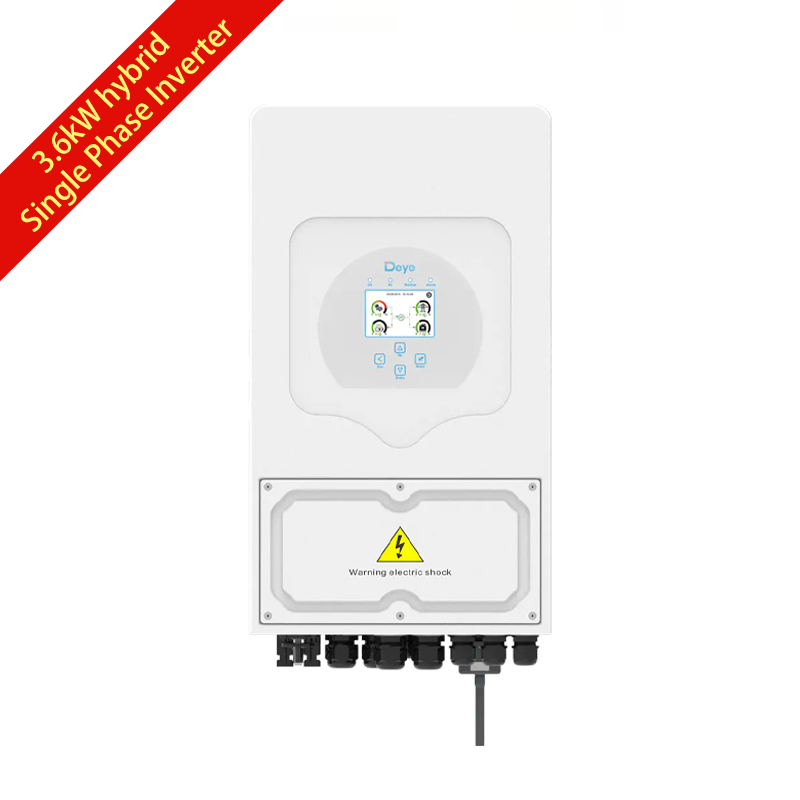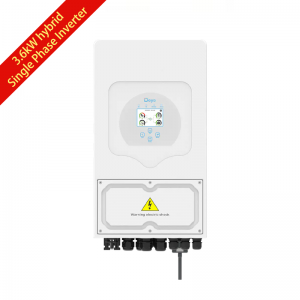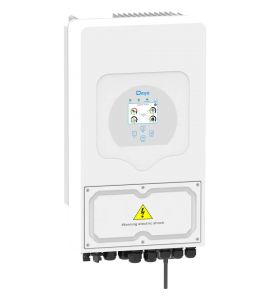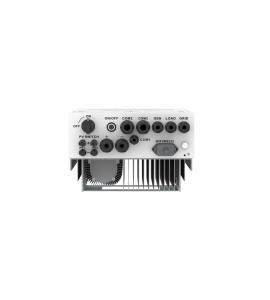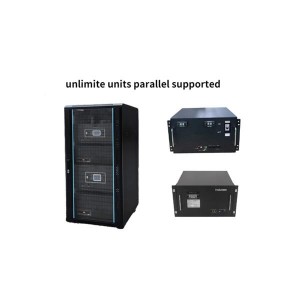

Deye 3.6kW Single Phase Hybrid Solar Inverter
ABOUT
Deye 3.6kW Single Phase Hybrid Solar Inverter
| Model | SUN-3.6K-SG03LP1-EU |
| Battery Input Data | |
| Battery Type | Lead-acid or Li-ion |
| Battery Voltage Range (V) | 40~60V |
| Max. Charging Current (A) | 90 |
| Max. Discharging Current (A) | 90 |
| Charging Curve | 3 Stages / Equalization |
| External Temperature Sensor | Yes |
| Charging Strategy for Li-Ion Battery | Self-adaption to BMS |
| PV String Input Data | |
| Max. DC Input Power (W) | 4680 |
| Rated PV Input Voltage (V) | 370(125~500) |
| Start-up Voltage (V) | 125 |
| MPPT Range (V) | 150-425 |
| Full Load DC Voltage Range (V) | 300-425 |
| PV Input Current (A) | 13+13 |
| Max. PV ISC (A) | 17+17 |
| Number of MPPT / Strings per MPPT | 2/1+1 |
| AC Output Data | |
| Rated AC Output and UPS Power (W) | 3600 |
| Max. AC Output Power (W) | 3690 |
| Peak Power (off grid) | 2 times of rated power, 10 S |
| Power Factor | 0.8 leading to 0.8 lagging |
| Max. Continuous AC Passthrough (A) | 35 |
| Output Frequency and Voltage | 50/60Hz;L/N/PE 220/230Vac(single phase) |
| Grid Type | Single Phase |
| Current Harmonic Distortion | THD<3% (Linear load<1.5%) |
| Efficiency | |
| Max. Efficiency | 97.60% |
| Euro Efficiency | 97.00% |
| MPPT Efficiency | 99.90% |
| Protection | |
| PV Input Lightning Protection | Integrated |
| Anti-islanding Protection | Integrated |
| PV String Input Reverse Polarity Protection | Integrated |
| Insulation Resistor Detection | Integrated |
| Residual Current Monitoring Unit | Integrated |
| Output Over Current Protection | Integrated |
| Output Shorted Protection | Integrated |
| Surge protection | Integrated |
| Certifications and Standards | |
| Grid Regulation | CEI 0-21, VDE-AR-N 4105, NRS 097, IEC 62116, IEC 61727, G99, G98, VDE 0126-1-1, RD 1699, C10-11 |
| Safety EMC / Standard | IEC/EN 61000-6-1/2/3/4, IEC/EN 62109-1, IEC/EN 62109-2 |
| General Data | |
| Operating Temperature Range (℃) | -45~60℃, >45℃ Derating |
| Cooling | Natural cooling |
| Noise (dB) | <30 dB |
| Communication with BMS | RS485; CAN |
| Weight (kg) | 20.5 |
| Size (mm) | 330W×580H×232D |
| Protection Degree | IP65 |
| Installation Style | Wall-mounted |
| Warranty | 5 years |
As the core energy conversion equipment of the photovoltaic system, the safety and reliability of the solar inverter determines the safety and reliability of the entire photovoltaic system. So how to ensure that the inverter is safe and reliable?
Pay attention to the following points
1. Look at the product's component supplier
Good components make the single phase solar inverter better performance and life in congenital quality. Make the product better environmental stress and resistance. To a certain extent, the quality of the product can be guaranteed.
2. Look at the reliability design of the product
A good solar inverter product can go through the test of various harsh environments, and long -term stable operation (the inverter should still work normally during the period of large water, the quality is excellent, and the quality determines the success or failure!) This is convenient for the reliability of the single phase solar inverter The design is closely related. The reliability design of the product mainly includes device selection, materials testing, system simulation testing, thermal design, protective capabilities, and the system self -recognition detection and protection function of the overall.
3. Look at his reliability test
Reliability testing refers to the laboratory simulation of various harsh environments to evaluate the working performance and disorders of the inverter. Grasp the performance of the single phase solar inverter. It predicts its working status and overall life impact in extreme environments, so as to grasp the quality of the product as a whole. Of course, field tests in reality are also indispensable.
4. Look at the evaluation of a third party
Many authoritative institutions such as third -party experts who are engaged in oil and gas in the energy industry will conduct a comprehensive assessment of energy products, from product performance to components, from the reduction of the company's own quality supervision system, etc. Astronomical assessment, such as PVEL, DNVGL and other institutions. When buying, you can pay attention to which honor and certification the product gets.
5. Look at the production management system
In addition to good design assessment and various certifications, the production management capability of the company and the quality supervision system are also very important, as this determines that the consistency of quality from product design to field application is more decisive for the safety and reliability of the product in practical application. The products need to have a complete fully automatic type of production process to produce the products, with intelligent testing of each production process to avoid production deviations, while performance tests and reliability tests are evaluated for each inverter leaving the factory to ensure the safety and reliability.
